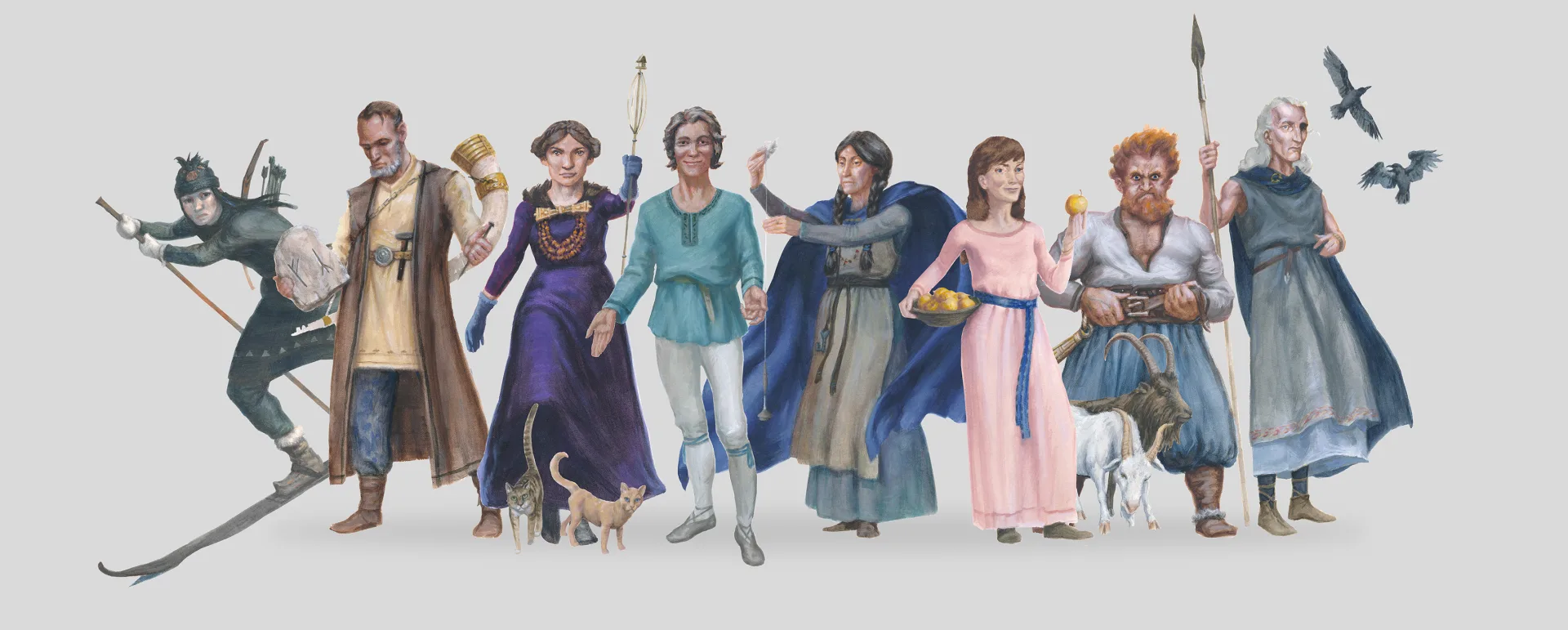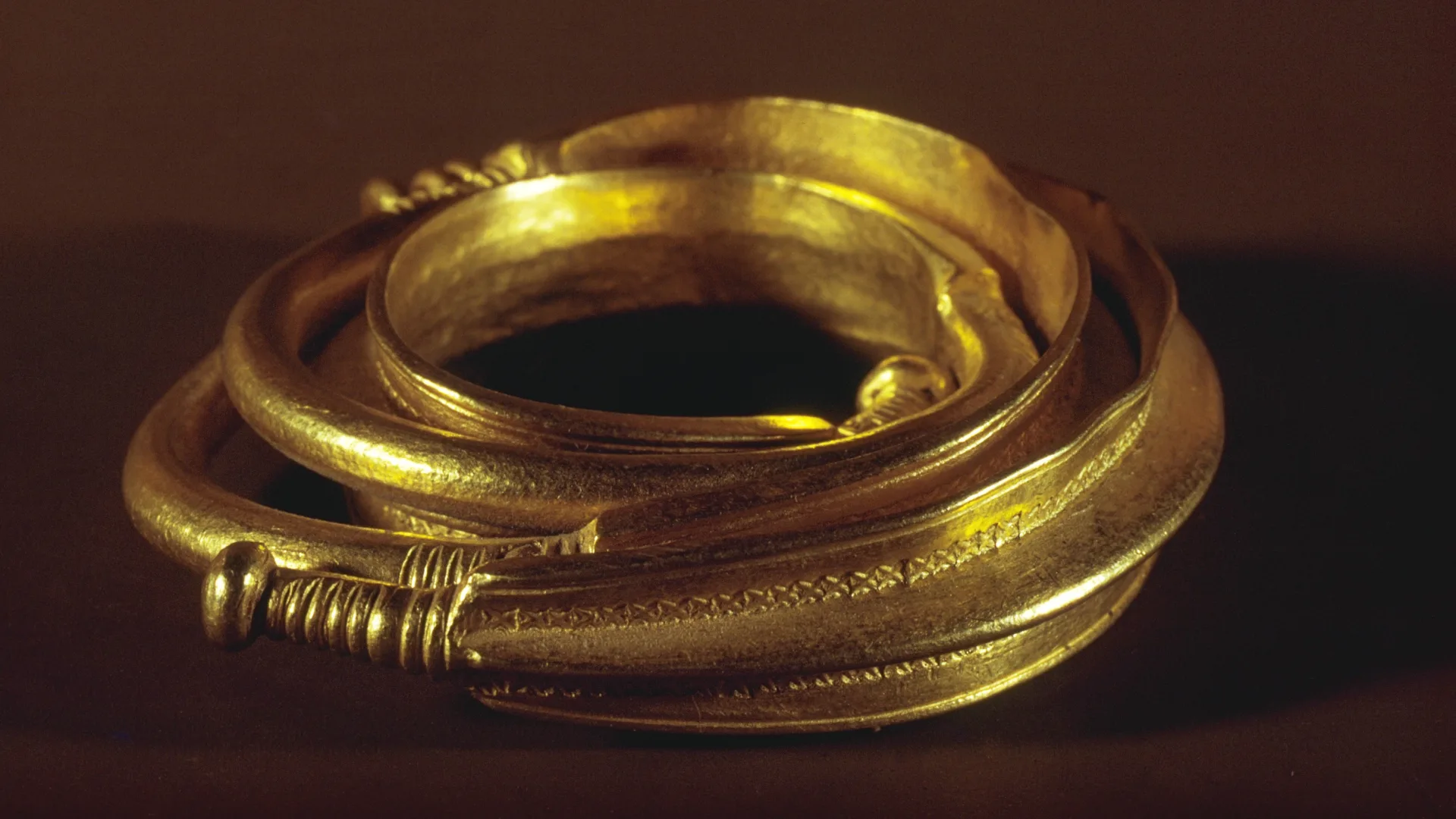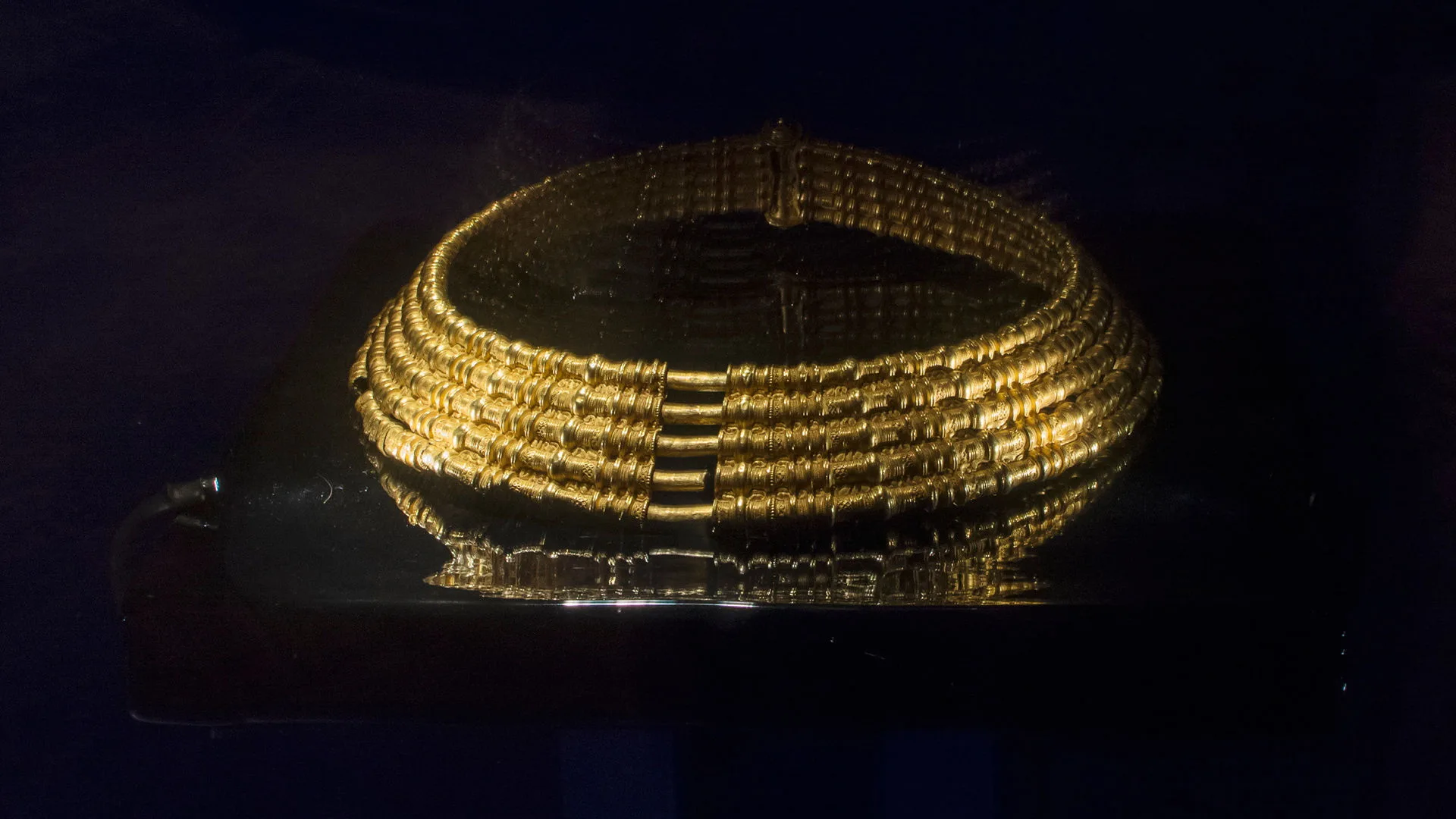Gods and goddesses of the Nordic Bronze Age
Stone Age
12,000 BC – 1700 BC
Bronze Age
1700 BC – 500 BC
Iron Age
500 BC – AD 1100
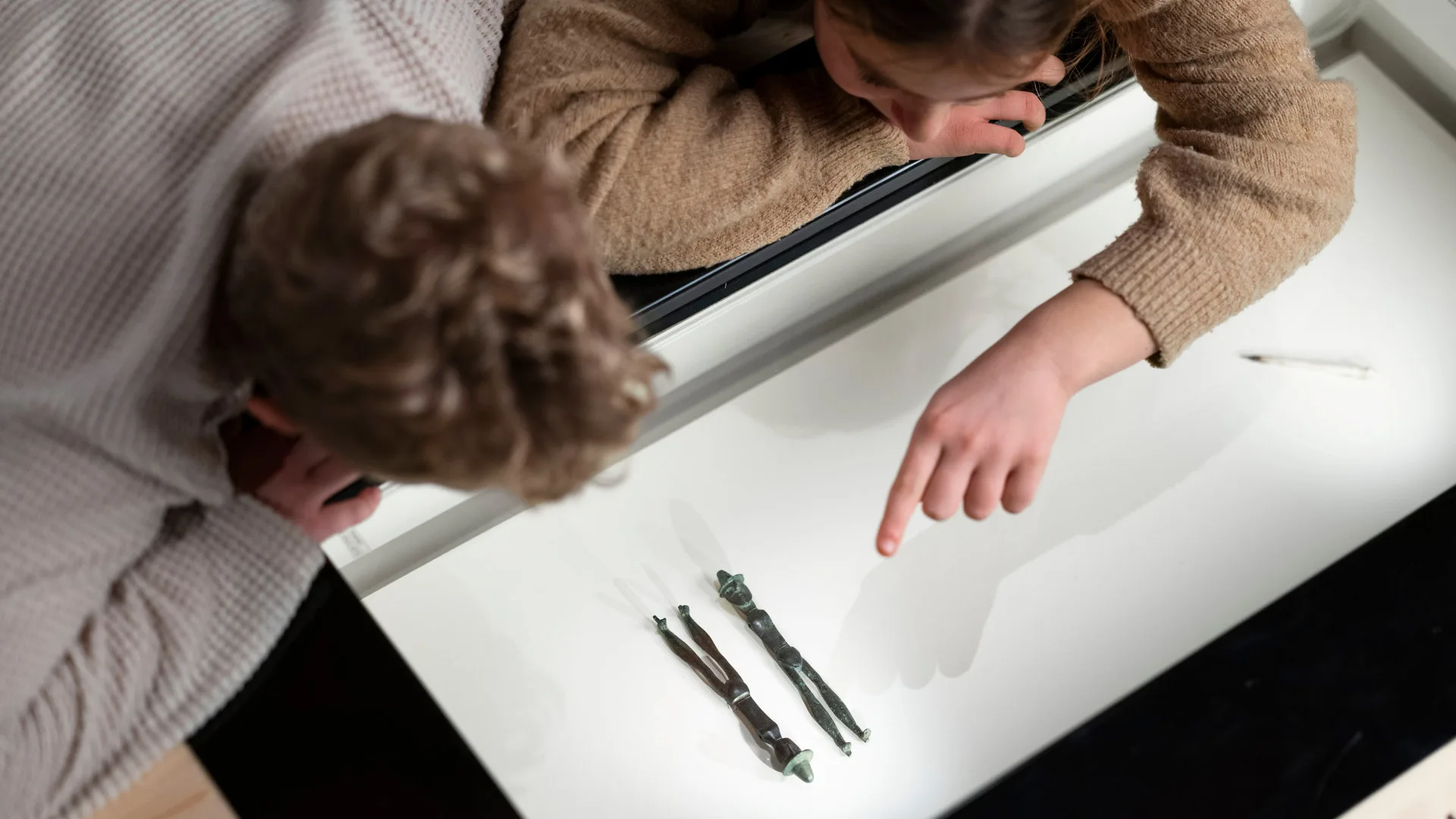
One example of such finds is a group of small bronze figurines that may have belonged to a Bronze Age pantheon. Statuettes, neck rings, and rock carvings in the collections of the Swedish History Museum also offer glimpses into that world.
Are the statuettes images of goddesses?
A number of small female figures from Blekinge, Skåne and Västergötland stand firmly with their hands placed beneath their breasts. They are unclothed but wear one or two neck rings. From the same period, full-sized bronze neck rings have been found buried in the ground, in marshes or shallow lakes often discovered in pairs. These figures and rings may represent a fertility goddess or a priestess.
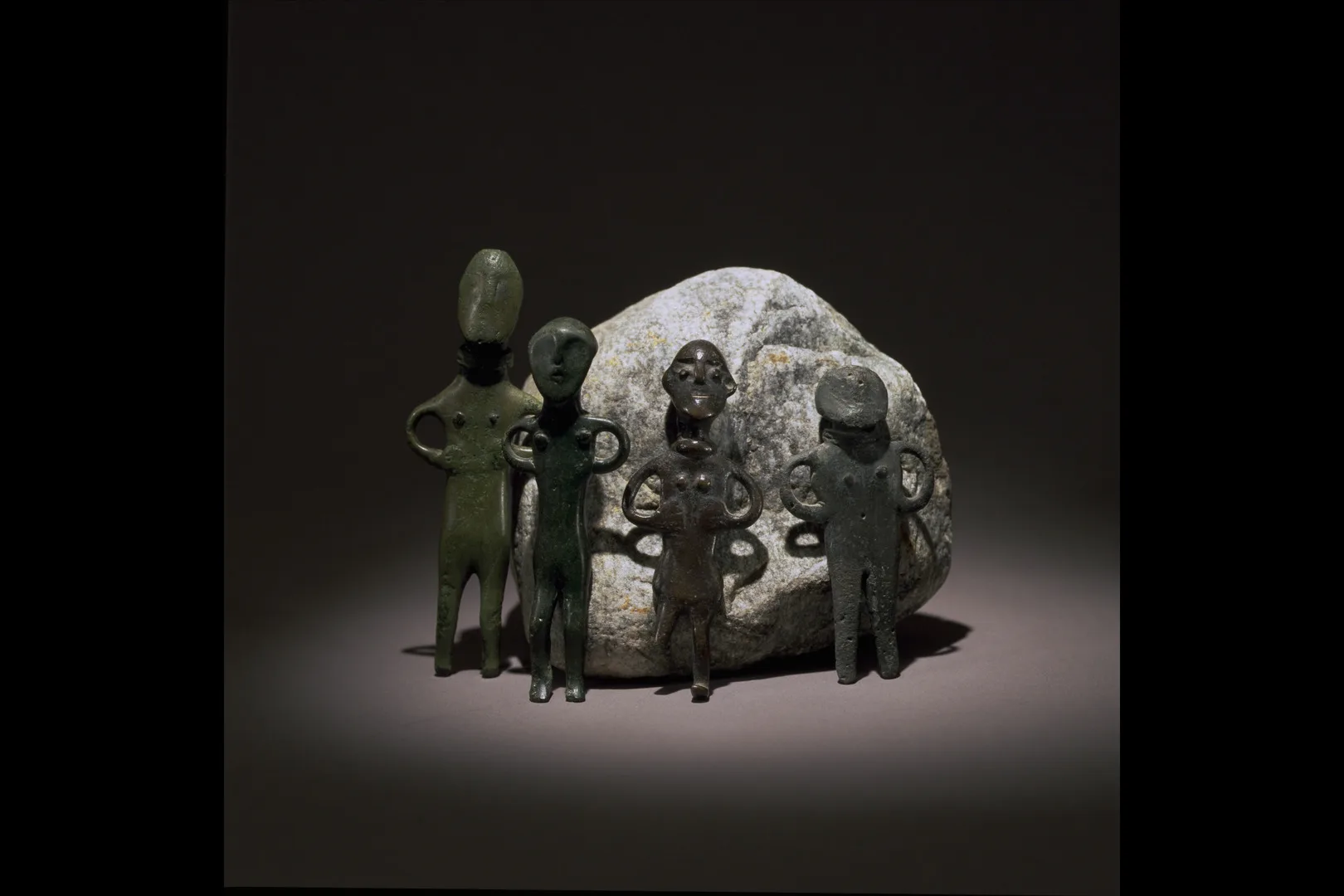
Figurines
The Loshult figurines – bronze twins offered to the gods
The Loshult figurines are two well-known small bronze figures in the collections of the Swedish History Museum. One interpretation is that they depict divine twins, similar to those in Greek mythology, such as the sons of Zeus.
They were created over 3,000 years ago. Their exact purpose remains unknown, but they were likely used as votive offerings. The fact that they are twins seems to have been significant.
Some archaeologists interpret them as twin gods inspired by ideas from Greek mythology. Others suggest that their distinctive hats indicate high social status. A different theory is that these are very early depictions of the Norse god Odin.

